#Tony Williams
Explore tagged Tumblr posts
Photo
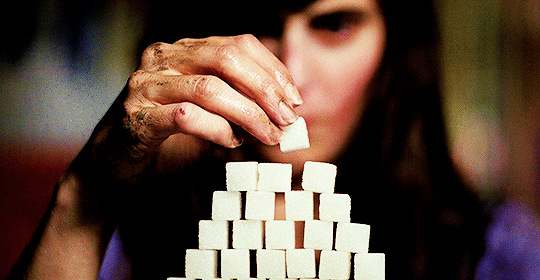


Next of Kin (1982) dir. Tony Williams
#next of kin#horroredit#filmedit#horrorgifs#filmgifs#classichorrorblog#horrorfilmgifs#userhorroredits#nextofkinedit#tony williams#jacki kerin#horror movies#film#jellymonstergrrrl
160 notes
·
View notes
Photo

American drummer Tony Williams
71 notes
·
View notes
Text

59 notes
·
View notes
Text

1970 - Tony Williams - publicité pour Gretsch Drums
31 notes
·
View notes
Photo

70 notes
·
View notes
Photo



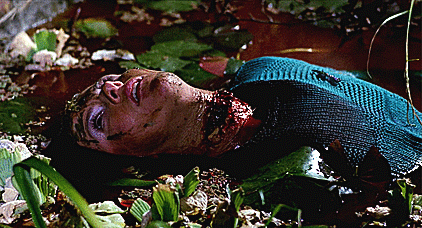
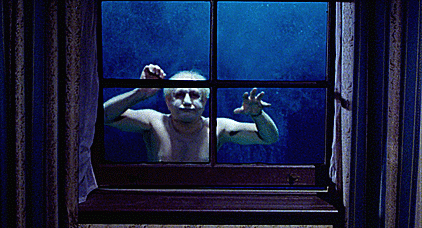

Next of Kin (1982)
#next of kin#horroredit#tony williams#jacki kerin#australian horror#80s horror#Horror Movies#filmedit#horror#80s#31daysofhalloween
177 notes
·
View notes
Text

Miles Davis with his 17 year old drummer, Tony Williams - San Francisco, 1963.
16 notes
·
View notes
Photo




42 notes
·
View notes
Photo

Ron Carter, Miles Davis and Tony Williams
25 notes
·
View notes
Text
Tom Skinner Interview: Vessels for Music to Be Heard
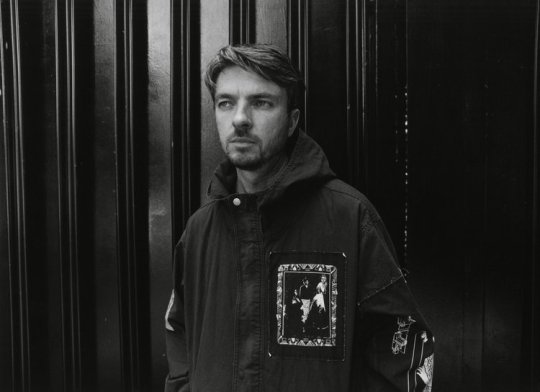
Photo by Alex Kurunis
BY JORDAN MAINZER
From the now-defunct jazz greats Sons of Kemet to best-ever Radiohead-adjacent project The Smile, Tom Skinner has not-so-quietly been one of the most versatile drummers of the past half-decade. Though he previously released his own music under the moniker Hello Skinny, earlier this month, Skinner shared his first album under his own name, Voices of Bishara (Brownswood/International Anthem/Nonesuch). The record doesn’t just exemplify Skinner as a player, but encapsulates his imaginative spirit as a listener and reinventor.
Throughout the COVID-19 lockdowns, Skinner listened repeatedly to Abdul Wadud’s 1978 solo album By Myself, privately pressed on Wadud’s label, Bishara. The Arabic name loosely translates to “the bringer of good news;” as lockdowns were lifted, vaccines administered, and live shows returned, it felt an appropriate word to reflect the genesis of what would become Voices of Bishara. A few years back, Skinner was invited to do a Played Twice session at London’s Brilliant Corners, wherein artists improvised in response to a classic album played through the venue’s audiophile system. That night, the album was Tony Williams’ Life Time; Skinner chose cellist Kareem Dayes, tenor saxophonists Nubya Garcia and Shabaka Hutchings, and bassist Tom Herbert. They had such natural chemistry that Skinner was inspired to write an album’s worth of new music, which he and the other four recorded live.
Voices of Bishara is far from a traditional jazz album, though, as Skinner returned to the recordings and edited between the instruments like his favorite disco and house producers would do. The result is an album with a tremendous sense of clearance, contrast, and opportunity for the individual players to shine. The muted, melancholy “Bishara” starts with just cello and bass before saxophone and rolling drums enter. “Red 2″, a response to Williams’ “Two Pieces Of One: Red” from Life Time, is shadowy, though Garcia’s flute shines through. Cello and chirping saxophone converse on “The Day After Tomorrow”, with Skinner’s drum rolls underneath the sighs of the woodwinds. “The Journey” and “Voices (Of The Past)” have a bit more of a groove and sway to them, Skinner’s drumming limber and snapping like a more traditional jazz or even boom bap beat. Voices of Bishara is more a retrospective of Skinner’s artistry and curatorial voice than a debut, let alone an assured mid-career album.
I emailed Skinner some questions about Voices of Bishara last month, touching on the album(s) that inspired it, responding to existing music, and composition. Read his responses below, edited for clarity.
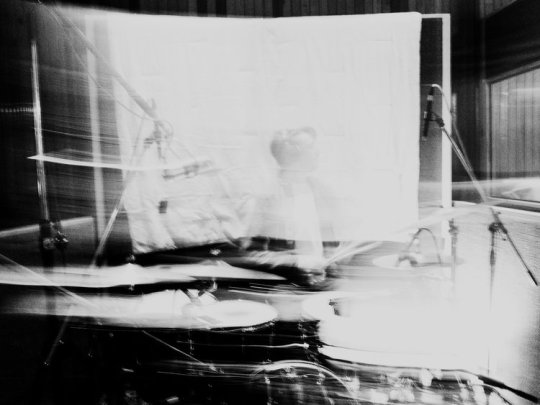
Photo by André Baumecker
Since I Left You: Why do you think you found yourself listening to Abdul Wadud's By Myself during COVID so much? What about it resonates with you?
Tom Skinner: There’s a purity to the record. It’s a very direct and deeply personal piece of work. When you’re listening to it, it’s just you and him, no overdubs or studio trickery beyond the odd edit here and there. He’s talking directly to you, and I found that very refreshing and inspiring. In terms of the pandemic, looking back on it, I think maybe I took some solace in that level of intimacy at a time when we weren’t able to interact with other people as much as we were accustomed to. It’s also just a fucking cool record, and his playing on it is absolutely incredible. It’s loose and free with some pretty far-out improv on there but also incredibly melodic and rhythmically very interesting and groovy, too. Somehow, he manages to encompass all of my favorite things about music in one clear and concise statement.
SILY: What was your first experience or relationship with Tony Williams' Life Time?
TS: I’ve been a fan of Tony’s playing from the first time I heard him on the classic Miles Davis quintet records of the 1960’s. His own records from that time, though, always seemed a little more challenging and experimental. I first heard Spring (his second for Blue Note), and it definitely took me a while to appreciate what was going on, but as an aspiring young jazz musician, it was inspiring to hear how he was pushing himself and the music into new directions on those recordings. The thing I love about Life Time in particular is the unusual instrumentation and the fact that each track features a different combination of players. Tony doesn’t even play on the final tune. Even by today’s standards, that feels ahead of its time.
SILY: When playing for the Played Twice session and this album, why did you specifically choose Kareem, Nubya, Tom Herbert, and Shabaka?
TS: The personal connections and friendships between myself and the people I work with are at the heart of all my projects and collaborations, and this record is no exception. I have known everybody on the record for a long time, and we have a deep and rich history of performing together in different contexts. Getting this specific group together came at a time when we were all playing regularly at Brilliant Corners in various combinations, often for the Played Twice sessions. What attracted me to this particular combination of personalities and players was the scope for orchestration that it presented: Kareem’s cello and Tom’s double bass is a small string section, and Shabaka and Nubya’s tenor saxophones are the wind section, with the added possibility of them doubling on either clarinets or flutes, respectively, and then me on percussion. I also wanted to allow the musicians as much space and freedom as possible within the framework of the songs and, although there are “featured” players on certain tracks, the music was written with a collective and egalitarian approach to improvisation in mind.
SILY: "Red 2" is about a quarter of the length of "Two Pieces of One: Red" and a bit more shadowy in spirit. How did you go about coming up with your version of it, and how did you approach the differences with the original?
TS: I wasn’t approaching it with the original piece in mind at all, and I definitely didn’t want to recreate what had already been done. I wouldn’t really call it a cover, either. With our "version" of “Two Pieces of One: Red”, I wanted to try to break it down to its base elements and focus on only a very small section of the original piece, almost like a sample or a loop that you might find on a hip-hop record. In that sense, the repetition of it becomes a compositional device, too. We then used this as a jumping off point for improvisation. In addition to this idea, I wanted to play around with the sound of the recording, using hard edits between the different instruments and microphones to accentuate an almost jarring sense of space and perspective in the music.
SILY: "Voices (Of The Past)" certainly has a more retro jazz feel to it, and the drums could almost be a part of a boom bap 90's hip hop song. What voices of the past were you referencing on this track?
TS: That’s a very good question and, if I’m honest, I’m not sure I really know. Perhaps I was referencing the music I grew up listening to? Specifically a steady diet of early 90’s hip hop during my teen-age years. That’s when I got heavily into jazz, too: Miles, Coltrane, Ornette, Monk, all the classics. When you’re young, you learn very quickly and soak up so much information. All that music is digested and becomes part of your DNA. So, in a way, I feel that, subconsciously, all those things are probably filtering through.
On a deeper level, though, as musicians, when we play, we are channeling the spirits of our ancestors and forefathers. The music exists all around us, and we are vessels for it to be heard.
SILY: "Quiet As It's Kept" is the most stark track on here, comparatively speaking. How important is it for you to use empty space in your compositions?
TS: Extremely important. Silence, a rest, or a pause are as important, if not more important, than any note that’s written or played. I’m trying to tap into that more and more with my approach to playing the drums and compositionally, too. Space is the place.
SILY: Why did you decide to release this album under your name as opposed to Hello Skinny?
TS: Initially it wasn’t the plan to release it under my own name. I was just going to call it Voices of Bishara. But, for various reasons, it made more sense to release it as Tom Skinner. At first, I wasn’t keen on the idea. I’m used to hiding behind another name--like Hello Skinny or whatever--and stepping out like that felt a bit daunting. But gradually, I came around to the idea and soon came to realize that releasing music under my own name actually gives me a lot more artistic freedom. This way, I’m not tied to any particular sound, style, or group. From one release to the next, I can essentially do what I want. That feels very liberating for me going forward.
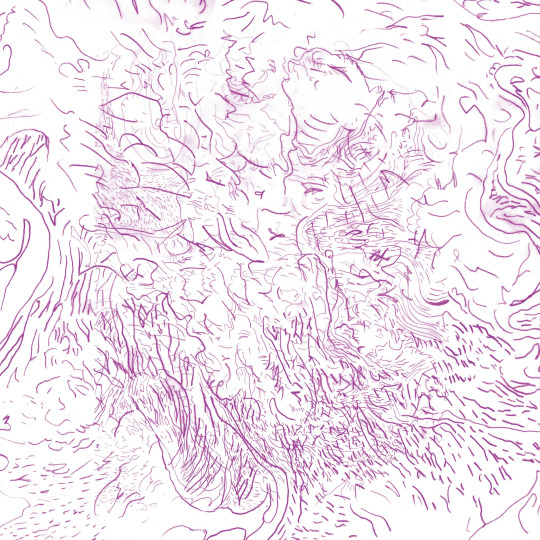
SILY: What's the story behind the album art?
TS: The album artwork and design are by the supremely talented Paul Camo. We’ve known each other for many years but only started working on projects together quite recently. This is the second sleeve he’s designed for one of my projects, the first being the Okumu, Herbert, Skinner Trio album Undone: Live at The Crypt released via Vinyl Factory in 2019.
I didn’t give Paul any specific direction; rather, I was more interested in him having complete freedom, to see how he reacted to the music creatively and allowing that to dictate the direction we took. Talking regularly with him and throwing ideas around was a very important part of the process as a whole in creating this record, and I feel like the artwork informs the music as much as vice versa, to the point where he’s now become a part of the group! Paul is a fantastic DJ and selector with a vast knowledge of all music but with a keen ear for deep jazz and improvised music. He performed with us on CDJs and samples at Church of Sound back in September. He has a regular show on NTS called We Are… which is well worth checking out. In addition to that, he runs Margate Radio (Margate is a town on the Kent coast where he is based) and is very active in the local music and art scene there.
SILY: Are you playing these songs live?
TS: We played one show in London at Church of Sound in September, and hopefully, we’ll get a chance to play some more shows next year. There are some potential opportunities on the horizon.
SILY: What's next for you?
TS: A tour across the US with The Smile that will take us right up to Christmas. I’ve started writing material for a second Bishara record. Plus, there are a few other album projects and collaborations in the works.
SILY: What have you been listening to, reading, and watching lately?
TS: Music (in no particular order): Sam Gendel, Armand Hammer, billy woods, Elucid, Low, Ingram Marshall, Robert Stillman, Loraine James, Joe Lovano’s Trio Tapestry, Julius Hemphill, Earl Sweatshirt, Coby Sey, Mica Levi, Moin, Aaron Dilloway, Lucrecia Dalt, Ohbliv, Jaimie Branch, keiyaA, Henry Threadgill, Tara Clerkin Trio, Charles Stepney, Rotary Connection, Jeanne Lee, The Beatles, Broadcast… I could go on, but we’d be here all day.
Books: The History of Bones by John Lurie and The Passengers by Will Ashon.
Film: The Hand of God by Paolo Sorrentino.
youtube
#tom skinner#interviews#brownswood#international anthem#nonesuch#brilliant corners#shabaka hutchings#voices of bishara#alex kurunis#sons of kemet#the smile#hello skinny#brownswood recordings#nonesuch records#abdul wadud#by myself#played twice#tony williams#life time#nubya garcia#kareem dayes#tom herbert#André Baumecker#bishara#miles davis#spring#blue note#john coltrane#ornette coleman#thelonious monk
4 notes
·
View notes
Text
Tony Williams, An Inspirational Background Across All Music Genres

Tony Williams was only 17-years in 1963 when debuted with Miles Davis. It came as one of the most interesting emergences across 20th-century music.
https://zerotodrum.com/tony-williams/
13 notes
·
View notes
Photo

American drummer Tony Williams
49 notes
·
View notes
Text
canon in D but it keeps getting jazzier
youtube
Hiromi Uehara performs Pachelbel's Canon In D. Transcribed by Tony Williams.
#johann pachelbel#canon in d#canone in re maggiore#hiromi uehara#tony williams#musica classica#classical music#jazz#swing#2022#Youtube
6 notes
·
View notes
Text

2 notes
·
View notes
Text
Tom Skinner — Voices of Bishara (Brownswood Recordings / International Anthem / Nonesuch)

Voices of Bishara by Tom Skinner
Drummer Tom Skinner has risen to prominence in the last 18 months via The Smile, his new band with Radiohead’s Thom Yorke and Jonny Greenwood. However, he’s been a member of jazz/Afrobeat quartet Sons of Kemet for over a decade, plus he’s released a couple of colorful albums under the moniker Hello Skinny. Voices of Bishara is Skinner’s debut under his own name, which brings all of his experience to bear into a succinct 28-minute release. It draws primarily on jazz and instrumental hip-hop to create a mostly groove-focused listen that sporadically ventures in wilder, freer territories.
Before getting into the music itself, the story behind the album’s genesis is well worth recounting. Skinner and his circle of musician friends get together on a regular basis for what they call “Played Twice” sessions, in which they play a classic jazz album in full on the Brilliant Corners venue’s audiophile system, then collectively improvise a musical response. In the case of Voices of Bishara, the inspiration was Tony Williams’ album Life Time (Blue Note, 1964). Skinner’s ensemble, featuring Kareem Dayes on cello, Tom Herbert on bass, Nubya Garcia on tenor sax and flute, and Shabaka Hutchings on tenor sax and bass clarinet, recorded the album in a day, then Skinner got to work editing the results into the album’s final form.
“Bishara” is easily the disc’s wildest cut, prompting some cacophonous blowing from Hutchings. “The Day After Tomorrow” is also loose, but in a completely different way, its lugubrious threads of sax and cello perpetually unspooling despite Skinner’s drums attempting to bring them into check. “Red 2” mines a similar seam, but in a more sinister, glowering way, enlivened by some mellifluous flute playing. Elsewhere the focus is on Skinner’s tight beat making, which on occasion seems to have been cut and pasted after the performance into looped grooves. This is especially apparent on “Voices (of the Past),” which has the most obvious post-production input and features jazz guitar samples. The bass and drums on “The Journey” are largely unwavering in their focus, over which the saxes blurt pointillistic figures. “Quiet As It’s Kept” rounds out the disc nicely will some of the musicians’ most swinging and lively ensemble playing. Here’s hoping this is just the first of many releases for this musical collective.
Tim Clarke
#tom skinner#voices of bishara#brownswood recordings#international anthem#tim clarke#album review#dusted magazine#sons of kemet#the smile#hello skinny#jazz#tony williams#kareem days#tom herbert#nubya garcia#shabaka hutchings#hip hop#fusion
4 notes
·
View notes
Photo

September 15:
On this date in 1992, a compilation album chronicling The Tony Wiliams Lifetime and entitled The Collection, was first issued.
On the 15th of September, 1995, totally noodly postrock band Don Caballero laid upon us 2, their appropriately titled second album.
On the 15th of September, 1998, Death the metal band from Florida released The Sound Of Perseverance, their last album.
#Tony Williams#The Collection#Don Cab#Death the metal band from Florida#The Sound of Perseverance#September 15
3 notes
·
View notes